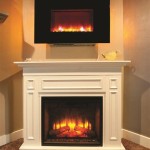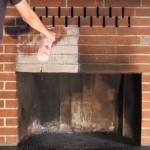Essential Aspects of Heat Resistant Cement For Fireplace
Fireplaces are a timeless and elegant addition to any home, providing warmth, ambiance, and a touch of sophistication. However, constructing and maintaining a fireplace requires careful consideration of various factors, one of the most important being the use of heat resistant cement.
Heat resistant cement, also known as refractory cement or fire cement, is a specialized type of cement specifically designed to withstand extreme temperatures and protect the fireplace from damage. Unlike regular cement, which can crack and deteriorate under intense heat, heat resistant cement forms a strong and durable bond that can endure the rigors of a burning fire.
Properties of Heat Resistant Cement
Heat resistant cement possesses several key properties that make it suitable for fireplace applications:
- High-temperature resistance: Heat resistant cement can withstand temperatures up to 2,500 degrees Fahrenheit (1,371 degrees Celsius). This ensures that the cement remains intact and protects the fireplace from cracking and heat damage.
- Strength and durability: Heat resistant cement forms a strong bond with masonry materials and other surfaces, creating a robust and long-lasting seal. It is resistant to thermal expansion and contraction, preventing the formation of cracks.
- Low permeability: Heat resistant cement has a low permeability, meaning it does not allow combustion gases or smoke to penetrate the fireplace structure. This helps to prevent fire hazards and ensure the safety of the occupants.
- Flexibility: Heat resistant cement is flexible enough to accommodate the movement of the fireplace materials due to thermal expansion and contraction. This flexibility prevents stress and cracking in the cement.
Applications of Heat Resistant Cement
Heat resistant cement is used in various fireplace applications, including:
- Firebox construction: The firebox is the heart of the fireplace and requires heat resistant cement to seal the joints between firebricks and protect the walls from heat damage.
- Flue and chimney repairs: Heat resistant cement can be used to repair cracks and gaps in the flue and chimney, ensuring proper exhaust of combustion gases and preventing heat loss.
- Hearth construction: The hearth is the area in front of the fireplace, and heat resistant cement can be used to create a durable and fire-resistant base.
- Fireplace accessories: Heat resistant cement can be used to secure fireplace accessories such as andirons, fire grates, and log holders, ensuring their stability and protecting them from heat damage.
Choosing the Right Heat Resistant Cement
When selecting heat resistant cement for your fireplace, consider the following factors:
- Temperature rating: Ensure that the cement you choose is rated to withstand the maximum temperature your fireplace will generate.
- Strength: Opt for a cement that provides the required strength for the application, such as high-strength cement for fireboxes or flexible cement for sealing joints.
- Packaging: Heat resistant cement is typically available in dry powder form or premixed paste. Choose the type that best suits your project.
- Brand reputation: Look for reputable brands with a proven track record of providing quality heat resistant cement for fireplace applications.
Conclusion
Heat resistant cement is an essential component of any fireplace, providing protection from heat damage and ensuring the safe and efficient operation of the fireplace. By understanding the properties, applications, and selection criteria of heat resistant cement, you can choose the right product for your fireplace and enjoy the warmth and ambiance it provides for years to come.

Heat Stop 50 Refractory Mortar Dry Mix Fire Resistant For Fireplaces And Ovens

Castable Refractory Cement Heat Cast 40

Heat Stop 50

Heatproof Mortar Superior Refractory Materials Vitcas

Fire Rated Mortar 10kg Dingo Cement

32 Oz High Temperature Furnace Cement

Eys Fireproof Cement

Rutland Castable Refractory Cement 12 5 Lbs

Vitcas Black Fire Cement 2kg Stove Oven Boiler Fireplace Flue Heat Resistant

What Is Fire Cement Used For Brick Slips








